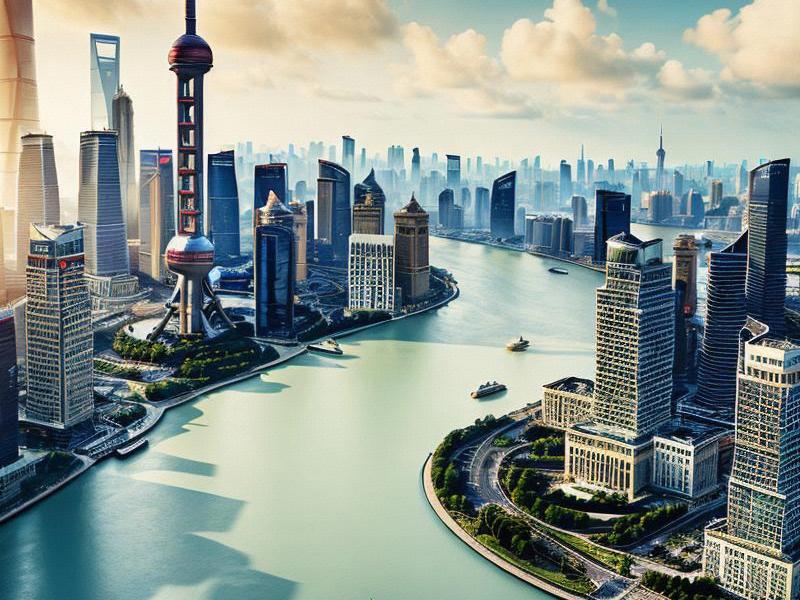Shanghai's Transformation: A Journey of Innovation and Sustainability
⏱ 2025-05-03 10:22 🔖 爱上海娱乐联盟
📢0℃

Shanghai, the bustling metropolis on the banks of the Huangpu River, has long been a symbol of China's rapid economic rise. Over the past few decades, this vibrant city has undergone a profound transformation, evolving from a manufacturing powerhouse to a global center for finance, technology, and culture. Today, Shanghai stands as a beacon of innovation and sustainability, setting new benchmarks for urban development and environmental stewardship.
The journey of Shanghai's transformation is nothing short of extraordinary. In the late 20th century, the city was primarily known for its heavy industries and textile manufacturing. However, with the advent of economic reforms and opening-up policies in the 1980s and 1990s, Shanghai began to embrace a new era of economic growth and modernization. The establishment of the Pudong New Area in 1990 marked a turning point, as the city leveraged its strategic location along the Yangtze River Delta to attract foreign investment and foster high-tech industries.
One of the most significant aspects of Shanghai's transformation has been its focus on innovation. The city has invested heavily in research and development, creating world-class institutions such as the ShanghaiTech University and the Zhangjiang Hi-Tech Park. These initiatives have attracted top-tier talent and spurred advancements in fields like artificial intelligence, biotechnology, and green energy. Shanghai's commitment to innovation is evident in its thriving tech ecosystem, which includes startups, venture capital firms, and multinational corporations.
The city's economic growth has been nothing short of remarkable. Shanghai's GDP has grown exponentially over the past few decades, making it one of the largest and most dynamic economies in the world. The city's strategic location and well-developed infrastructure have made it a hub for international trade and commerce. The Shanghai Stock Exchange, one of the largest in Asia, plays a crucial role in facilitating capital formation and economic development.
上海龙凤419贵族 However, Shanghai's transformation is not solely focused on economic growth. The city has also prioritized sustainability and environmental protection, recognizing the importance of balancing progress with ecological responsibility. Shanghai has implemented a range of measures to reduce its carbon footprint and promote green development. These include the expansion of public transportation networks, the promotion of electric vehicles, and the development of renewable energy sources.
One of the most notable examples of Shanghai's commitment to sustainability is the construction of the Xujiahui Park, a former industrial site that has been transformed into a lush urban oasis. This project showcases the city's ability to repurpose land for environmental and recreational purposes, providing residents with a haven of greenery amidst the concrete jungle. Similarly, the Bund, once a symbol of colonialism, has been revitalized as a cultural and recreational area, offering stunning views of the Huangpu River and a glimpse into the city's rich history.
Shanghai's efforts to combat air pollution have also been commendable. The city has implemented strict emission standards for vehicles and industries, leading to a significant reduction in air pollution levels. Additionally, Shanghai has invested in green infrastructure, such as rooftop gardens and vertical forests, to improve air quality and enhance urban biodiversity.
The transformation of Shanghai is not without its challenges. As the city continues to grow and modernize, it must address issues such as housing affordability, traffic congestion, and social inequality. The rapid pace of urbanization has led to a surge in demand for housing, resulting in soaring property prices that make it difficult for many residents to afford homes. Traffic congestion is another pressing issue, with the city's extensive road network struggling to keep up with the increasing number of vehicles.
上海贵族宝贝龙凤楼
To address these challenges, Shanghai has implemented a range of policies aimed at promoting sustainable urban development. The city has launched initiatives to improve public transportation, including the expansion of the metro system and the introduction of bus rapid transit lines. These measures aim to reduce reliance on private vehicles and alleviate traffic congestion.
Shanghai has also prioritized affordable housing, with the government investing in large-scale housing projects to provide residents with access to quality, affordable homes. The city has introduced policies to regulate the real estate market, ensuring that housing prices remain stable and accessible to a wide range of income groups.
In addition to economic and environmental challenges, Shanghai must also navigate the complexities of social integration. As a global city, Shanghai is home to a diverse population, including migrants from other parts of China and international expatriates. Promoting social cohesion and inclusivity is essential to ensure that all residents can thrive in this dynamic urban environment.
上海喝茶群vx Despite these challenges, Shanghai's transformation remains a testament to the city's resilience and adaptability. The city's ability to balance economic growth, sustainability, and social well-being serves as a model for other cities around the world. As Shanghai continues to evolve, it is poised to play an increasingly important role on the global stage.
The future of Shanghai looks bright, with the city poised to become a leader in innovation, sustainability, and urban development. The Chinese government's Vision 2035 plan envisions Shanghai as a global hub for high-quality development, emphasizing the importance of innovation, green development, and people-centered urban planning. This vision aligns with Shanghai's ongoing efforts to crteeaa livable, sustainable, and prosperous city.
In conclusion, Shanghai's transformation is a remarkable story of resilience, innovation, and sustainability. The city has successfully navigated the challenges of rapid urbanization and economic growth, setting new benchmarks for urban development and environmental stewardship. As Shanghai continues to evolve, it serves as a model for other cities around the world, demonstrating the possibilities of a future that is both prosperous and sustainable.
Shanghai’s Fintech Renaissance: Where Bund Architecture Hosts Blockchain Revolution【外滩18号的秘密:百年建筑里的爵士复兴】Shanghai 4450: Quantum Nightlife Nexus and the Galactic Entertainment Singularity《夜上海的华丽转身:从百乐门到外滩十八号》《夜上海的三个瞬间:从礼查饭店到复兴艺术中心》Shanghai’s Quantum Nightlife: Where Imperial Gardens Host Blockchain-Powered Revelries【钢与梦的交响:上海天际线的百年叙事】Shanghai’s Green Renaissance: Where Ancient Waterways Fuel Quantum Innovation【灶披间到智能厨房:上海弄堂里的烟火进化史】Shanghai 4550: Quantum Delta Renaissance and the Galactic Sustainability Matrix

